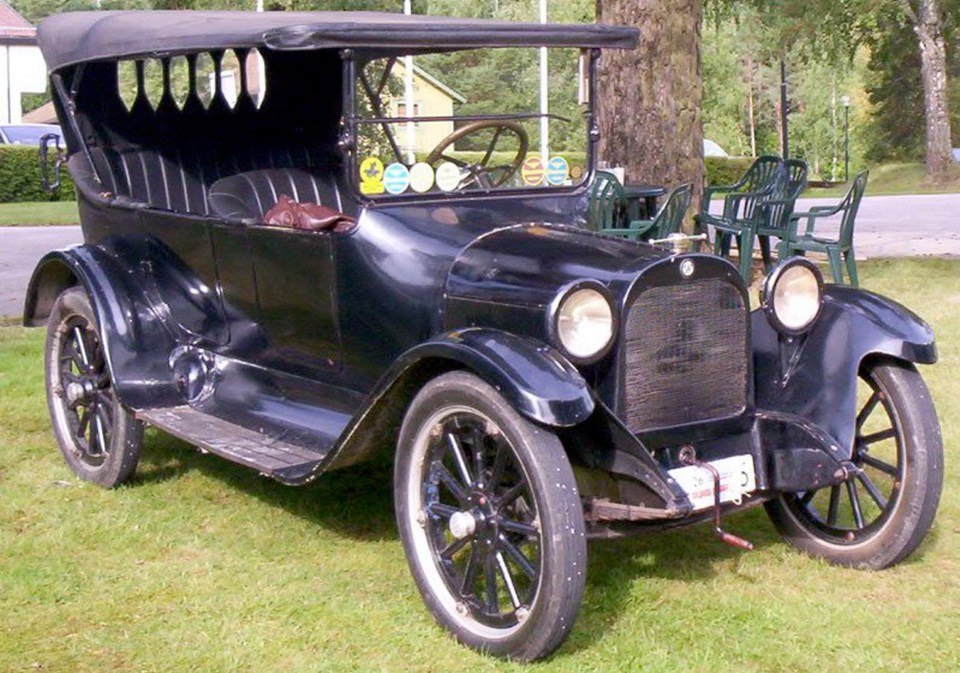Although materials such as plastic, aluminum, carbon fibre and others are used in car bodies, steel still predominates. Originally made largely of wood, car bodies made of steel evolved after cars had become established.
It is most strongly associated with Edward Gowen Budd, but despite his major contribution to automobiles, his name is often more associated with trains. At one time, Budd was second only to Pullman.
When cars started becoming useful conveyances after the turn of the 20th century, they still carried strong carriage influences. Their rudimentary wooden bodies were supported by flexible-steel or wooden frames.
As cars grew more affordable and reliable, motorists sought comfort and weather protection. The young science of metallurgy began playing a greater role in automotive engineering, an example of which was Henry Ford’s use of tough vanadium alloy steel in his cars.
Edward Budd was born in Smyrna, Delaware, on Dec. 28, 1870. His birth coincided with the development of pressing steel into thin sheets, and Budd would become inextricably associated with sheet steel.
Budd worked as a machinist and draughtsman and studied at the University of Pennsylvania. He was interested in the potential of pressed, or stamped, steel as a replacement for heavy, brittle cast iron.
He joined the American Pulley Company, whose new steel pulley was stronger and lighter than traditional iron ones. They also supplied stamped-steel seat pedestals to railway car company Hale & Kilburn, and in 1902 Budd joined Hale & Kilburn at twice his American Pulley salary. Within a few years, he was general manager.
During this period, sheet steel was challenging cast iron and being utilized in a variety of applications, including ceilings and walls of buildings. Steelmakers were improving stamping quality with more consistent thickness control and better tempering. Budd saw sheet steel’s potential for the burgeoning automobile industry, and soon had Hale & Kilburn supplying such items as doors and cowls to the industry.
Budd was convinced that steel bodies would ultimately replace wood, and was therefore delighted when Hale & Kilburn was approached by Hupmobile in about 1910 about building an all-steel car. Budd and Hupmobile’s engineers collaborated in fabricating a totally steel body. They achieved it, but there was extensive welding and bracing required because steel fabricators had not yet learned how to press large compound curved sections.
Hale & Kilburn was sold, and the new owners disagreed with the direction Budd had taken the company. He left Hale & Kilburn and used his savings and borrowed capital to open a metal-pressing business, Edward G. Budd Manufacturing Co., in Philadelphia in 1912. His reputation attracted skilled staff, including a brilliant Viennese engineer named Joseph Ledwinka. Over the years they would become inseparable confidants.
Because the young company lacked sufficient building space, it kept its key asset, a large stamping press, in a circus tent beside the plant. A break came when General Motors ordered an all-steel Buick body, and 2,000 Oakland bodies. Progress was rapid, and in 1914, Ledwinka was granted a patent for the world’s first all-steel, all-welded automobile body.
John and Horace Dodge in Detroit had been supplying engines and other components to Henry Ford, and when they broke with Ford and established their own car company, they decided steel bodies were the future. They turned to Budd, and the 1914 Dodge Brothers car became the first all-steel automobile produced in large quantities.
This was only the beginning for Budd. He went on to provide steel bodies, components and body engineering to many companies, including General Motors, Chrysler (including the Airflow models), Delage, Citroen, Mercedes and Morris.
Budd saw the future as the “chassisless” car, now called unit construction, and Budd’s Chrysler Airflow was a step in that direction. They built the 1941 Nash Ambassador 600 model that pioneered the American industry’s first full unit-construction car.
He established Germany’s largest steel-stamping company, Ambi-Budd, which designed the Volkswagen “Jeep” model. Unfortunately, the plant was lost during the Second World War. With Morris Motors in England it established the Pressed Steel Co., which was later sold. Budd also had stamping plants in France and Italy.
In the 1930s, Budd began developing railway trains, and in 1934 it sold its first stainless-steel three-car train with the engine in one of the cars. An early advocate of diesel trains, Budd made such stainless-steel railway legends as the fast Super Chief and El Capitan. Self propelled “Budd Cars” were once a common sight on Canadian tracks, including the E&N railway on the Island.
Edward Budd worked right up to his death on Nov. 30, 1946, at almost 76. His legacy was the all-steel car body and the Budd Company. It was acquired by German-based ThyssenKrupp in the 1970, and is now part of Canadian auto-parts manufacturer Martinrea International.



